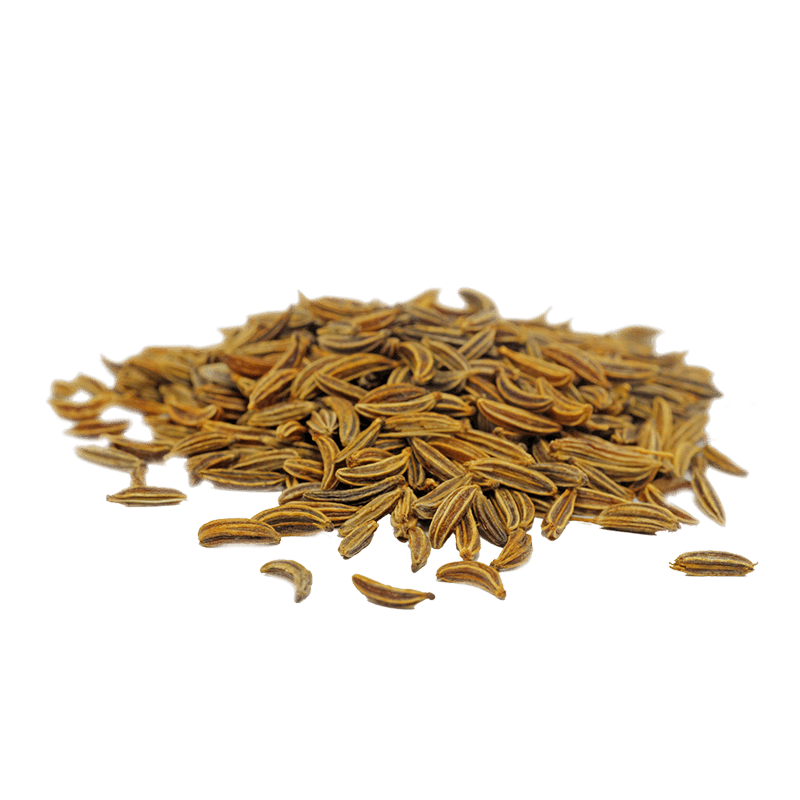Latin name
Carum carvi L.
Origin
Central Europe.
Used part
The seeds.
Botanically, its fruit is schizocarps (fruit composed of multiple carpels).
Active components
Essential oil (carvone, limonene): it has an antiseptic action and improves digestion.
Usage
The fruit has a spicy flavour and smells of aniseed. It is used as a spice in bread. Caraway is also used in desserts and savoury dishes. As a traditional ingredient in Germanic cuisine, it is often added to sauerkraut. Caraway is also found in numerous alcohols and liqueurs such as Kummel and Aquavit. The essential oil is often used as an ingredient in soap, lotions and perfumes. Caraway seeds have been used since ancient times to treat various disorders, mainly of the digestive system. They also contribute to the normal function of the intestinal tract and support the production of digestive juices. Caraway alleviates sluggish digestion, flatulence and intestinal cramps. 1-3 The essential oil contributes to resistance to pathogenic micro-organisms.

